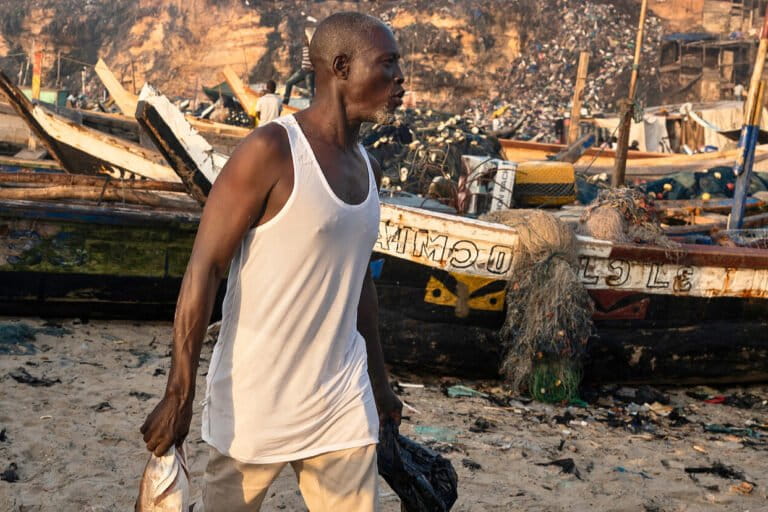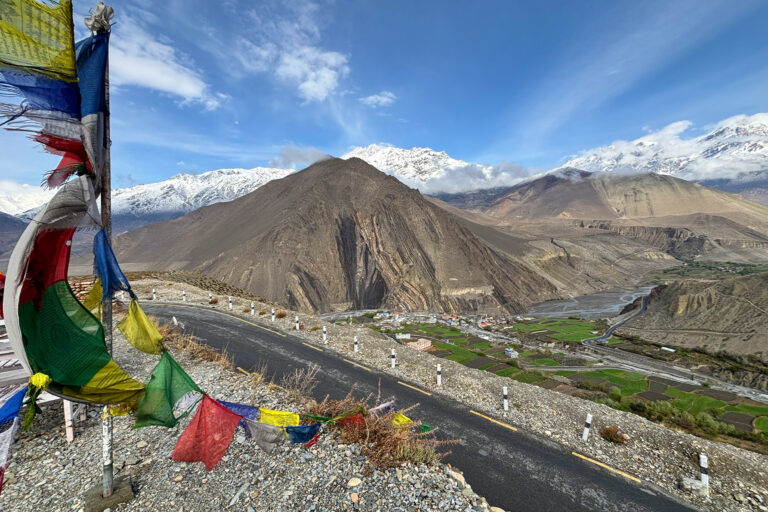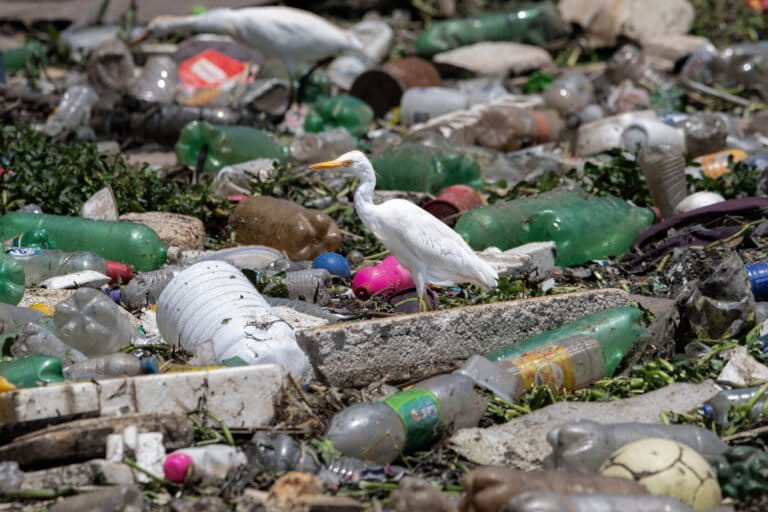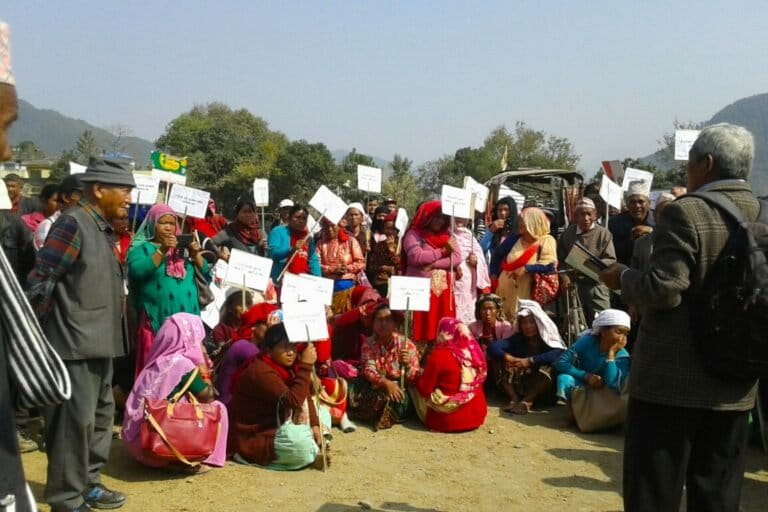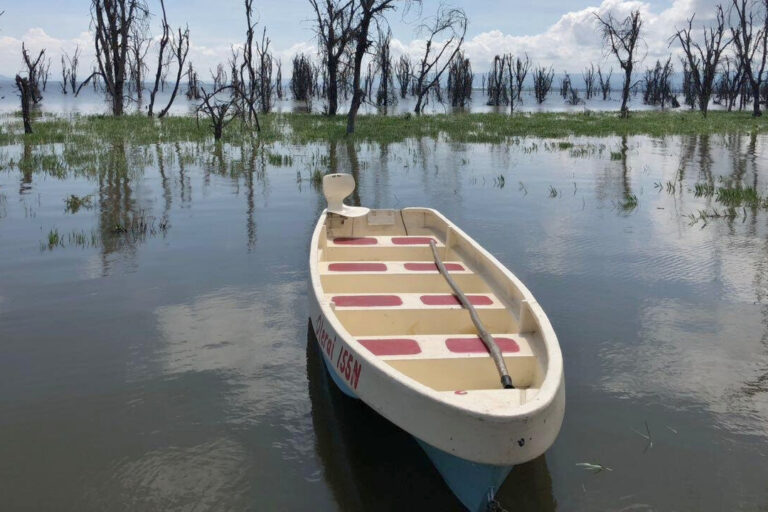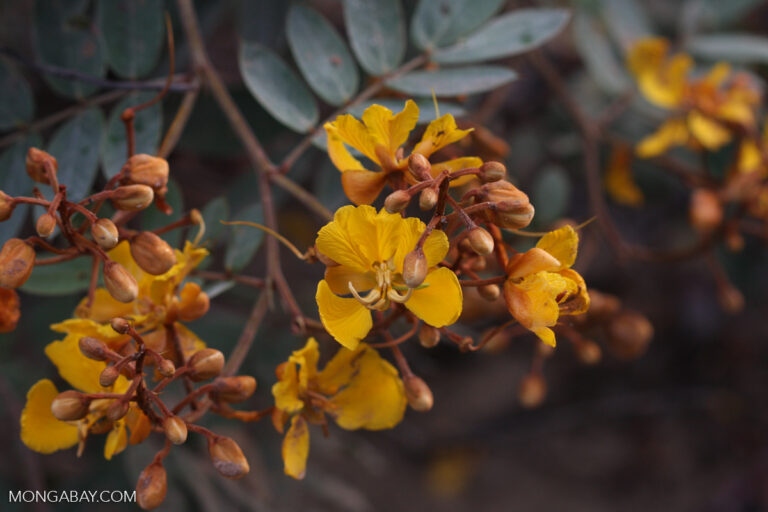- River levels in parts of the Brazilian Amazon are even lower than in 2023, when the region experienced its worst drought.
- In the Munduruku Indigenous Territory, in Pará state, low river levels are forcing communities to drink water contaminated by mercury.
- Indigenous leaders call for immediate help while children suffer from diarrhea and stomachaches.
One year after being hit by its worst drought ever recorded in the Amazon, Brazil is facing it all again. According to the National Center for Natural Disaster Monitoring, CEMADEN, the country is going through its worst drought since 2015, but now, it’s widespread in almost all regions. More than a third of Brazil — an area equivalent to the size of India — is facing drought at its worst.
The situation is especially bad for Amazon rivers, which haven’t seen enough rain since 2023 and have reached historic lows. The Solimões River section in Tabatinga municipality, in the state of Amazonas, hit 94 centimeters (37 inches) below the station’s reference level. Previously, the lowest level recorded had been 86 cm (34 in) in 2010.
The succession of dry periods is contributing to fire outbreaks (possibly triggered by criminal activity). So far in 2024, burned areas in the Amazon total an area equivalent to Costa Rica’s territory and larger than countries like Denmark and Belgium.
In the state of Mato Grosso, where rivers feed basins in the Amazon, the Pantanal wetlands and the Cerrado savanna, the Paraguay and Cuiabá rivers have also reached historic lows.
According to experts, the new crisis is fueled by the warming of the North Atlantic waters, responsible for diminishing the rains in northern Brazil and by climate change.
“If we look at August, most of the rivers in the Amazon are at a lower level than last year, when the condition was the worst possible,” said Flávio Altieri, science and technology analyst at the CENSIPAM, a research center that supports other federal bodies operating in the Amazon. “Each year, these extreme floods and extreme ebb events have been happening more frequently and their intensity has increased. In a way, we are experiencing climate change,” he told Mongabay.
In the Munduruku Indigenous Territory, in Pará state, several small rivers and springs used as water sources have already dried up. As a result, people from around 10 villages are drinking water from larger rivers like the Tapajós, one of the main illegal gold mining hubs in the Amazon. As a result, the Indigenous people are consuming water polluted by mercury, a toxic substance smuggled into Brazil and used to separate precious metal from other sediments.
“The river has this dirty water, and the children can’t drink it,” João Akay Kaba, coordinator of the Pusuru Indigenous Association, told Mongabay. “Some of them drank dirty water and got health problems like diarrhea and stomachaches.”

The depletion of drinking water sources aggravated a scenario that was already worrying — according to a study from Brazil’s leading federal health research center, Fiocruz, the Munduruku population already has alarming levels of mercury in their bodies.
The toxic substance moves up the food chain and concentrates in carnivorous fish, an important food source for local communities. Eventually, it can lead to tingling, ringing ears, trembling, weakness, memory loss and cognitive issues. Mercury can also pass from a pregnant woman to her fetus inside the uterus, and the baby may be born with rare neurological syndromes such as cerebral palsy.
“We urgently need help to drill artesian wells,” urges Kaba, who is waiting for some help from Funai, the federal Indigenous affairs agency. Mongabay asked Funai about the situation, but didn’t receive a response.
In Brazil’s far north, communities from Roraima state faced a similar situation at the beginning of the year, when springs dried and fires burned the pipes that took water to the communities. According to Marcelo Macuxi, the general coordinator of the Association of Indigenous Peoples of Terra São Marcos, more than 500 cattle died of thirst in their territory, where livestock is a source of income. “We are left without water to drink and to maintain production and guarantee food for the communities,” he told Mongabay.

In Terra São Marcos, help from UNICEF and the NGO Cáritas Brasileira was crucial to supply water to the communities in the absence of support from local authorities. “They were very important in providing support to recover springs, replace burnt pipes, supply water tanks and build artesian wells,” Macuxi said.
The states of Rondônia, Amazonas and Acre are the most affected by the drought, according to CENSIPAM’s Altiere. In Acre, water tanks installed for residents of rural communities are not enough to cope with the crises, while in Amazonas, more than 250,000 people in 20 municipalities are affected by the drought. According to the Brazilian news outlet Amazônia Real, some communities are being forced to drink muddy water and are running out of food.
“Traditional communities, especially in the more remote areas of the Amazon, suffer the most. They are isolated because sometimes their only means of transportation is the river,” said Altieri, who warned there was no sign of rain in this region for the next two months.
Banner image: The 2024 drought has reached all Amazon states in Brazil, and river levels, such as in the Solimões, are facing historic lows. Image courtesy of the Civil Defense.
CORRECTION (9/9/2014): An earlier version of this article stated that the drought is especially bad for Amazon rivers, which haven’t seen enough rain since 2013. The correct year is 2023, and the post has been corrected.
After historic 2023 drought, Amazon communities brace for more in Brazil
Brazil launches ‘war’ on widespread fire outbreaks & criminal arsonists
FEEDBACK: Use this form to send a message to the author of this post. If you want to post a public comment, you can do that at the bottom of the page.







